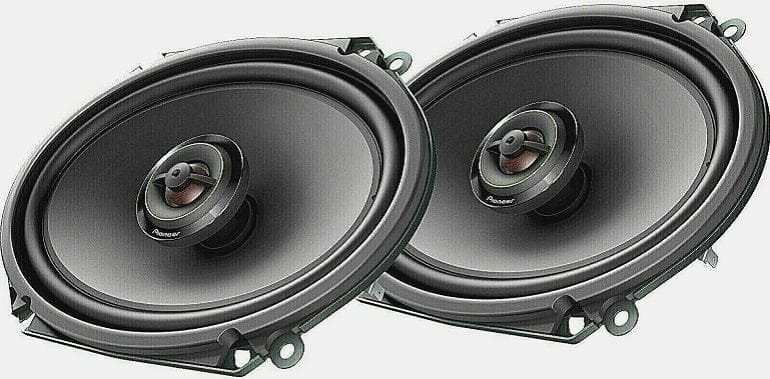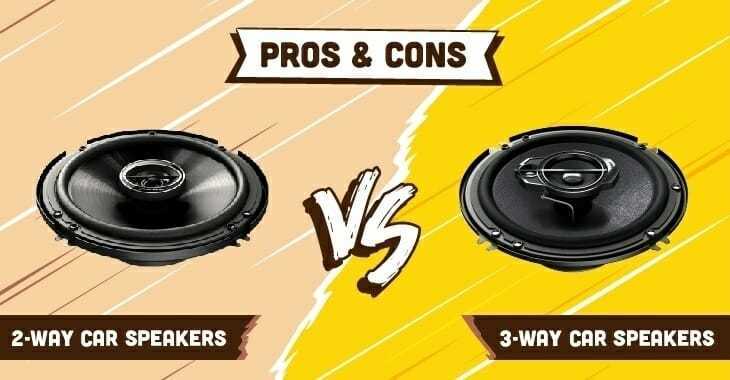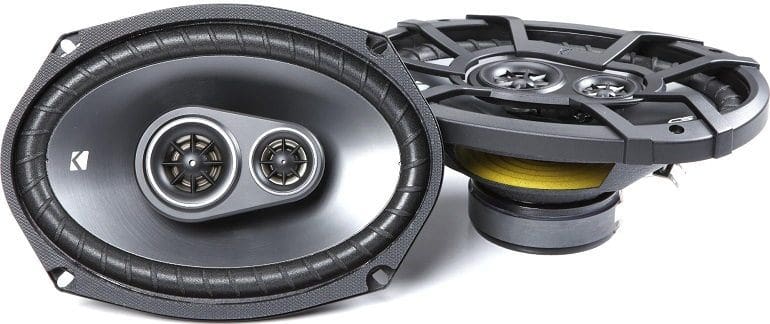by Joshua Thomas
The terms 2-way and 3-way car speakers have obvious distinctions for motorists who know enough about car sound systems. But, for newbies that understand much less about sound systems or speakers, such terms make little sense.
If you find yourself in a situation where you have to decide whether to go for a 2-way or 3-way car speaker, it is essential to note that the main difference between the two is the number of drivers.
2-way speakers include two drivers, which are the woofer and tweeter. The 3-way speakers have three drivers, which are the woofer, tweeter, and a mid-range driver. Here we look at the differences between the two in more detail.

The 2-way speakers will typically consist of two drivers in the same housing; a large woofer and a tweeter. But, 2-way refers to any speaker that includes a woofer and tweeter regardless of the number of either. You can get this speaker in either a coaxial or component setup.
With the 2-way coaxial speaker, you have a woofer and tweeter in the same box. The woofer delivers the low frequencies, typically the notes from musical instruments such as the bass guitar, tuba, and drums.
Because there is no midrange driver, the woofer also takes up some of the mid-range frequencies. Overall, the woofer will produce frequencies between 20 Hz and 2 kHz.
The tweeter, on the other hand, is responsible for the high frequencies. Hence, it is what delivers the notes from musical instruments like flute and cymbal. Audio frequencies produced by tweeters range from 2 kHz to 20 kHz.
The 2-way speakers include a built-in crossover to split the frequency into two. This crossover sometimes also blocks specific frequencies from each of the two drivers. Given there is only one driver (tweeter) over the cone, you get better clarity from a coaxial as there is less sound obstruction.
For the shortcomings, the 2-way coaxial speakers seem to sacrifice the lower basses and mid-range frequencies
In a 2-way component system, the woofer and tweeter are in two separate boxes. Here, you typically get both the woofer and tweeter in pairs. But it is important to note that these systems require an external crossover.
Overall, 2-way car speakers are more affordable, whether you are going for coaxial or component options. Given their relatively more straightforward design, they are quicker and easier to setup. However, a 2-way component speaker's overall sound quality is not as good as the 3-way component system.

Pros:
Cons:

3-way speaker systems, whether they are coaxial or component, consist of three drivers: the woofer, mid-range, and tweeter.
The 3-way or triaxial speaker has three drivers in one box. These car speakers have the woofer as the main driver and a couple of small drivers over the cone. While the two top drivers often look almost identical, it is vital to note that one is a mid-ranger driver and the other a tweeter.
The presence of two drivers over the cone causes more obstruction, which can affect the clarity significantly. However, if you use the speaker on a stereo, you hardly notice the clarity dip.
Mid-range drivers on these speakers provide the midway sound frequencies somewhere between the lows of a woofer and the tweeter's highs. The frequency is more of vocals and notes from music instruments like saxophones and trumpets.
These speakers have a passive crossover for splitting the frequency into three, but it does not seem to work very well. Crossovers seem to have an easier time splitting the frequency into two.
Note: Some 3-way speakers use a super-tweeter instead of a mid-range driver, and therefore they only extend the high-frequency response and will not do anything for the midrange frequencies.
For the 3-way component speaker, you get the three drivers in different boxes. These systems typically include a pair of all the drivers and divide the range between them to ensure superior clarity.
3-way components speakers require an external crossover circuit to ensure the frequencies are split perfectly for the best sound quality. The lows, highs, and mids are much better when using these speakers, explaining why they are more expensive.
With the different frequencies having a dedicated driver, these speakers can also handle relatively higher power output without distortion, unlike the 2-way component speakers. However, the installation process is more complicated and tedious, given there are more items.
Pros:
Cons:
The 2-way car speakers only have one small driver over the cone, minimizing obstruction to ensure better sound clarity. This design makes them the best choice if you want to stick to a simple coaxial setup.
Going with the 3-way speaker for a coaxial system leads to a significant dip in the sound quality as there is more obstruction for the cone given the two drivers at the top.
However, if you prefer the component car speaker setup, the 3-way option where you have the three drivers in different boxes is the best choice. Here the 3-way speaker easily outperforms 2-ways by delivering increased sound accuracy.
Read More: The Best Car Speakers
 |
 |
 |
 |

About Joshua Thomas
Joshua Thomas just simply loves cars and willing to work on them whenever there's chance... sometimes for free.
He started CarCareTotal back in 2017 from the advices of total strangers who witnessed his amazing skills in car repairs here and there.
His goal with this creation is to help car owners better learn how to maintain and repair their cars; as such, the site would cover alot of areas: troubleshooting, product recommendations, tips & tricks.
Joshua received Bachelor of Science in Mechanical Engineering at San Diego State University.